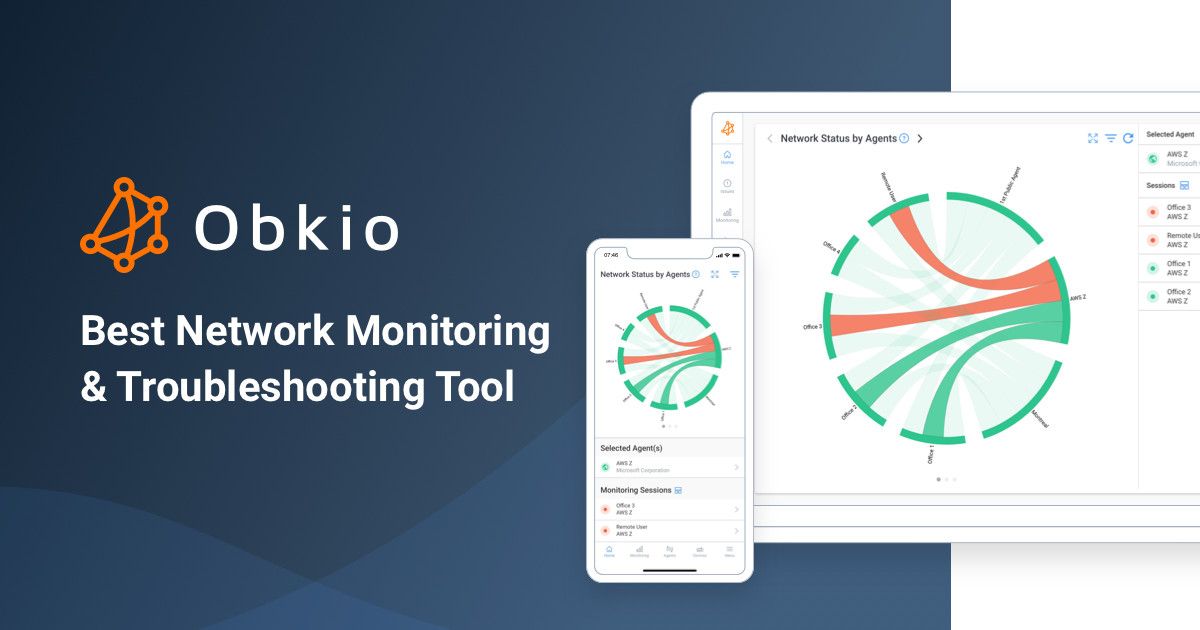Table of Contents
Table of Contents
If you're a Salesforce user, you know how important it is for your system to run smoothly and quickly. Slow page loads and poor performance can lead to frustration for users and ultimately, lost productivity and revenue for your business.
In this article, we'll explore the best practices for optimizing and monitoring your Salesforce performance and speed, so you can unleash the lightning in your instance.
We'll cover strategies for streamlining your setup, tips for minimizing page load times, and best practices for optimizing queries and data retrieval.
Additionally, we'll discuss the importance of real-time monitoring, best tools for performance and speed monitoring, and how to analyze and interpret performance metrics.
By following these best practices, you can improve user experience, increase efficiency and productivity, and avoid costly downtime.
Before diving into the best practices for optimizing and monitoring Salesforce performance and speed, it's important to understand why this is a critical area of focus for businesses.

In this section, we'll explore some of the key reasons why optimizing and monitoring Salesforce performance and speed is important, including improved user experience, increased efficiency, avoidance of downtime, and better decision making.
Optimizing and monitoring Salesforce performance and speed is important for several reasons:
- Improved User Experience: Slow load times and poor system performance can lead to frustration for users, which can ultimately lead to decreased productivity and satisfaction. Optimizing performance and speed can improve user experience and increase engagement.
- Increased Efficiency: A fast and efficient Salesforce instance means that users can get their work done quickly and easily. This can result in increased efficiency, productivity, and ultimately, revenue.
- Avoidance of Downtime: Downtime can be costly and can result in lost revenue, decreased productivity, and damage to your company's reputation. Monitoring your Salesforce instance can help you identify issues before they result in downtime and allow you to take proactive measures to avoid it.
- Better Decision Making: Performance metrics and monitoring can provide valuable insights into how your system is performing and where improvements can be made. This data can inform your decision-making process, allowing you to make more informed choices about how to allocate resources and optimize your system.
In short, optimizing and monitoring Salesforce performance and speed is critical for improving user experience, increasing efficiency and productivity, avoiding downtime, and making better-informed decisions.
Slow Salesforce performance can have a significant impact on your business, resulting in lost productivity, decreased sales, increased support costs, and reputation damage. These costs can add up quickly, impacting your company's bottom line.
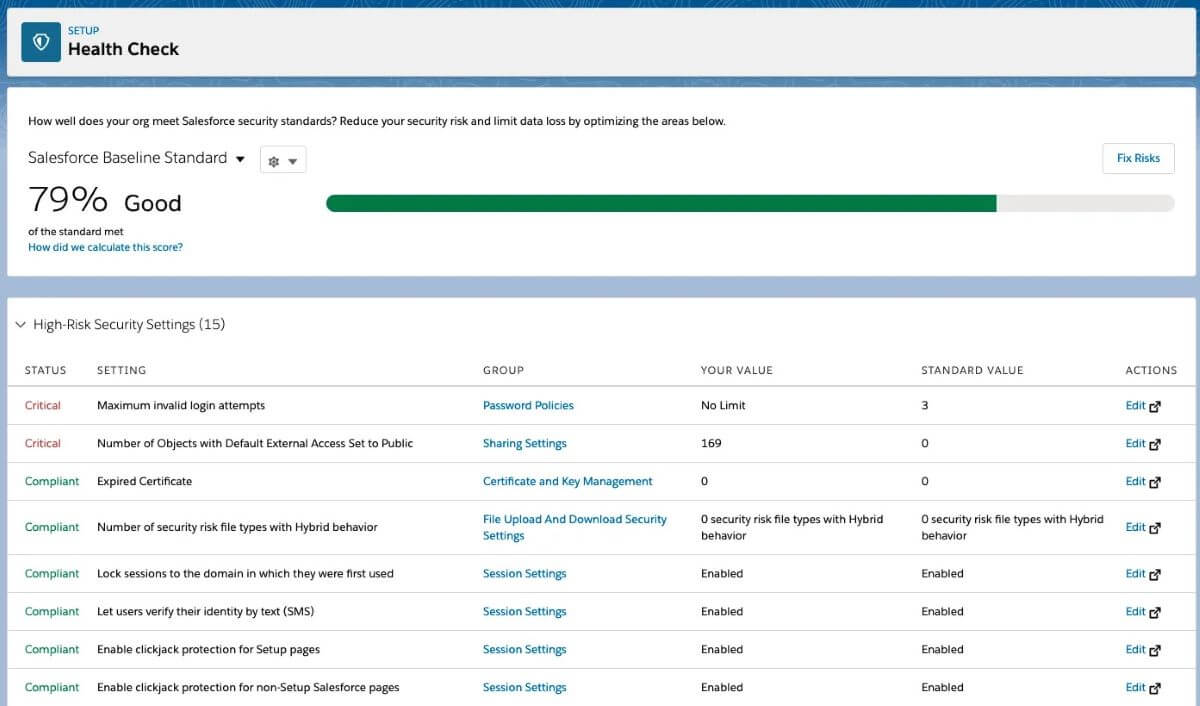
In this section, we'll explore the impact of slow Salesforce performance, with specific examples.
By understanding the financial impact of slow performance, you can make a compelling case for investing in performance optimization and monitoring efforts, and ensure that your Salesforce instance is delivering optimal performance and user experience.
Here are some examples of the ROI impact a slow Salesforce can have on your business, with monetary values:
- Decreased Productivity: Slow Salesforce performance can lead to decreased productivity for your employees. For example, if a sales representative spends an extra 15 minutes per day waiting for pages to load, this can add up to over 60 hours per year in lost productivity. Assuming a salary of $50,000 per year, this translates to a cost of approximately $2,500 per employee per year.
- Reduced Sales: Slow Salesforce performance can also impact your company's bottom line by reducing sales. For example, if a customer experiences slow page load times and decides to abandon their shopping cart, this could result in lost revenue. If a company has 100 abandoned carts per month due to slow performance, with an average cart value of $100, this could result in a loss of $10,000 per month, or $120,000 per year.
- Increased Support Costs: Slow Salesforce performance can also increase the cost of support. For example, if a customer experiences slow performance and contacts support for assistance, this can increase support costs. Assuming a cost of $20 per support call, if a company receives an additional 50 support calls per month due to slow performance, this translates to an additional cost of $12,000 per year.
Overall, the financial impact of slow Salesforce performance can be significant, with costs ranging from lost productivity and sales to increased support costs and reputation damage. By optimizing and monitoring Salesforce performance, businesses can reduce these costs and drive revenue growth.
According to a recent survey reported by Network World, performance issues with business applications are a significant challenge for many businesses. While some lucky individuals claim to never have performance issues, the majority of respondents reported frequent incidents.
The survey found that one-third of respondents reported one or two incidents per month, 35% reported three to five incidents, 14% experienced between five and 15 incidents, and 8% experienced performance incidents almost daily.
The impact of these incidents on business operations is significant, with 46% of respondents citing a deterioration in customer satisfaction, 38% reporting loss of productivity within corporate IT, 33% reporting loss of non-IT employee productivity, 22% reporting lost revenue, and 12% reporting penalties for missing SLAs.
Identifying the root cause of a network bottleneck is no easy feat, as reported by the majority of survey respondents. It can take hours (46% of respondents), days (22%), or weeks (8%) to identify the cause of a typical business application performance issue. Only 22% of respondents were able to identify a problem in just minutes, while a lucky 2% were able to do so in seconds.
Fixing performance issues is a manual effort for 53% of respondents. Alternatively, respondents use diagnostic tools (36%), third-party solutions (17%), or other methods (6%).
Overall, the majority of respondents (62%) expressed dissatisfaction with their current approach to fixing business application performance issues.
Is your Salesforce platform running at its peak performance? To ensure your team's productivity and deliver exceptional customer experiences, it's crucial to monitor the performance of your Salesforce application continuously. Obkio's Network Monitoring tool is here to help you do just that.
- Real-Time Insights: Gain real-time visibility into the performance of your Salesforce application. Identify and resolve issues before they impact your users.
- End-to-End Monitoring: Obkio provides comprehensive end-to-end monitoring, from your users' devices to Salesforce servers, ensuring you catch bottlenecks at every level.
- Proactive Issue Resolution: Receive instant network monitoring alerts and notifications when performance deviations occur. Take proactive measures to maintain the highest level of Salesforce availability and responsiveness.
- User Experience Optimization: Understand how network and application performance affect your users' experience. Make data-driven decisions to improve their satisfaction.
- Scalability: Whether you're a small business or a large enterprise, Obkio scales with your needs, providing monitoring solutions that grow as you do.

Don't let Salesforce slowness slow down your business!
Sign up for Obkio's Free Trial today to proactively monitor and detect performance issues in your Salesforce system, improve your system performance, and ensure a better user experience.
- 14-day free trial of all premium features
- Deploy in just 10 minutes
- Monitor performance in all key system components
- Test real-time Salesforce performance metrics
- Identify and troubleshoot live system performance problems

As the demands on Salesforce instances continue to grow, ensuring optimal performance is paramount. This is where Salesforce performance monitoring comes into play.
Salesforce performance monitoring is a comprehensive process that involves continuous evaluation, analysis, and optimization of your Salesforce instance to guarantee that it operates efficiently and effectively. It goes beyond just keeping the lights on; it's about delivering an exceptional user experience, maintaining data integrity, and preventing performance issues before they impact your operations.
This process aims to identify, diagnose, and address any issues or bottlenecks that may impact the performance and usability of the Salesforce platform. Here's what Salesforce performance monitoring typically entails:
Response Time Monitoring: Keep an eye on the response times of Salesforce pages and transactions. Monitor the time it takes for a user's request to be processed and for the application to respond. Slow response times can be an indication of performance issues.
User Experience Monitoring: Assess the end-user experience by tracking the load times of key Salesforce pages and functionalities. This helps ensure that users are not experiencing delays or frustration while working within the platform.
Transaction and Query Monitoring: Analyze the performance of frequently used transactions and database queries, such as SOQL queries. Identify slow-running queries that may impact page load times and user interactions.
API Usage Monitoring: Keep track of API call limits and usage, especially if your Salesforce instance is integrated with external systems. Exceeding API limits can result in throttling and performance degradation.
Server and Infrastructure Monitoring: Monitor the health and resource utilization of the servers hosting your Salesforce instance. This includes measuring CPU usage, memory usage, and disk space to ensure they are within acceptable limits.
Network Performance Monitoring: Assess the network connectivity between users and Salesforce servers. Network issues can significantly affect application responsiveness.
Error and Exception Tracking: Keep a record of any errors, exceptions, or warnings that occur within Salesforce. Investigate and resolve these issues promptly to prevent them from impacting performance.
Scalability Testing: Periodically test the Salesforce instance's ability to handle increased loads and concurrent users. This helps identify scalability issues before they become critical.
Security Auditing: Ensure that security configurations are not causing performance bottlenecks. Regularly review and optimize security settings.
Apex Code and Trigger Analysis: Review and optimize Apex code and triggers to minimize execution time and resource consumption. Avoid unnecessary code complexity.
Governor Limits Compliance: Ensure that your Salesforce implementation adheres to Salesforce's governor limits, such as limits on the number of records processed or the execution time for specific operations.
Integration Monitoring: Monitor the performance of integrations with external systems to identify any delays or issues in data exchange.
Capacity Planning: Forecast future resource needs based on historical data and expected growth. Ensure that your Salesforce environment has the necessary capacity to handle increased workloads.
Alerting and Notification: Set up alerts and notifications to proactively detect and respond to performance issues in real-time.
Continuous Improvement: Regularly review performance data, analyze trends, and make necessary optimizations to maintain or enhance Salesforce performance.
Effective performance monitoring not only helps prevent downtime and user frustration but also ensures that Salesforce remains a strategic asset that supports your business objectives. It's a crucial part of maintaining a reliable and high-performing CRM system.
Salesforce is a powerful business application that can streamline your operations and help you achieve your goals.
However, like any application, it can be affected by performance and speed issues that can impact user experience and productivity.
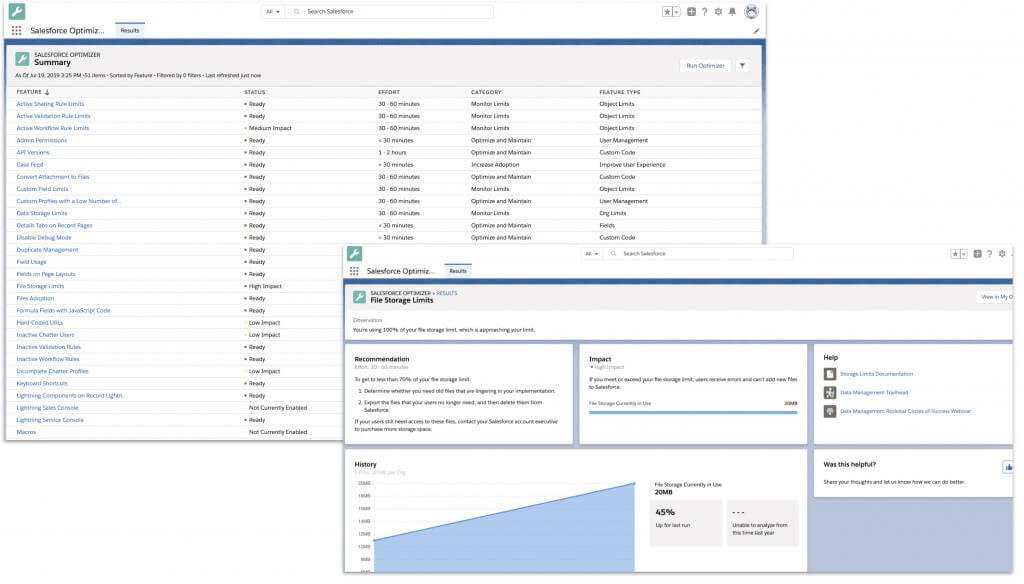
In this section, we'll explore some of the most common performance and speed issues that affect Salesforce, including slow page load times, poor query performance, limited bandwidth, high latency, infrastructure issues, and customization and configuration issues.
By understanding these issues, you can take proactive measures to prevent them and optimize your Salesforce instance for maximum efficiency and productivity.
There are several types of performance and speed issues that can affect Salesforce, including:
- Slow Page Load Times: This occurs when pages take a long time to load, causing delays for users and leading to frustration and decreased productivity.
- Poor Query Performance: This occurs when queries take a long time to execute, leading to slow data retrieval and decreased system performance.
- Limited Bandwidth: This occurs when there is not enough bandwidth available to handle user traffic, leading to slow page loads and decreased system performance.
- High Latency: This occurs when there is a delay between user actions and system responses, leading to slow system performance and decreased productivity.
- Infrastructure Issues: This can include problems with servers, storage devices, network connections, or other infrastructure components that can lead to slow system performance or downtime.
- Customization and Configuration Issues: Customizations or configurations that are not optimized can also cause performance issues, leading to slow system performance and decreased productivity.
It's important to monitor and optimize your Salesforce instance regularly to identify and resolve performance and speed issues before they become significant problems.
Salesforce performance and speed issues can arise from a variety of sources, including your Salesforce instance and customization or the Salesforce platform itself. To effectively address performance and speed issues, it's important to understand the source of the problem.
Performance and speed issues can occur in your Salesforce instance due to factors such as inefficient configuration, customization, or data management practices. In these cases, performance can often be improved through optimization efforts, such as streamlining workflows, optimizing queries, and reducing data volumes.
On the other hand, performance and speed issues can also be caused by issues with the Salesforce platform itself, such as server downtime, network outages, or software bugs. In these cases, resolution may require a different approach, such as working with Salesforce support to identify and resolve the issue.
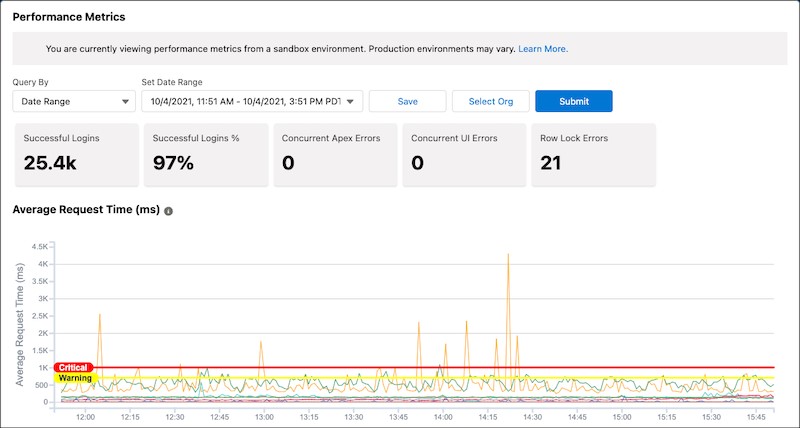
In some cases, it can be difficult to determine whether performance and speed issues in Salesforce are originating from your instance or from the Salesforce platform itself.
However, with the help of an application performance monitoring software, you can gain valuable insights into how your Salesforce instance is performing and identify potential issues before they become major problems.
Here are some questions to consider when pinpointing the source of Salesforce performance and speed issues:
- Is the issue occurring constantly or intermittently? Are there specific times of day or actions being performed when the issue occurs?
- Have there been any recent changes to the Salesforce instance or customization? If so, what changes were made, and could they be contributing to the performance issue?
- Is the issue affecting all users, or only a specific subset of users? If only specific users are affected, what distinguishes them from others?
- Have there been any recent updates or changes to the Salesforce platform itself? Could these updates be contributing to the performance issue?
- Have you reviewed performance metrics, such as network response time, latency, throughput, and error rates? If so, what trends or patterns do they reveal?
- Have you analyzed application logs or conducted diagnostic tests? If so, what insights do they provide?
- Have you engaged with Salesforce support to troubleshoot the issue? If so, what have their findings been?
- Have you considered external factors, such as network connectivity issues or browser compatibility issues, that may be impacting performance?
- What steps have you taken to optimize Salesforce performance and prevent future issues?
- How will you continue to monitor Salesforce performance to ensure that issues are identified and resolved in a timely manner?
APM software can monitor your Salesforce instance in real-time and provide detailed metrics on key performance indicators, such as page load times, query performance, and error rates. This can help you quickly identify and diagnose issues with your instance, such as inefficient configurations, customizations, or data management practices.
Furthermore, if performance and speed issues persist despite optimizing your Salesforce instance, APM software can help you identify if the problem is coming from the Salesforce platform itself.

By analyzing metrics on platform availability, server response times, and network latency, APM software can help pinpoint the root cause of the issue and provide actionable insights for resolving it.
In summary, by using an application performance monitoring software to monitor and optimize your Salesforce instance, you can not only improve your system's performance and speed, but also identify if the issue is originating from Salesforce itself
Ensuring that your Salesforce instance runs smoothly and efficiently is not just about following best practices; it also involves employing advanced tools and techniques. Improving Salesforce performance and troubleshooting speed issues often requires a combination of best practices, configuration optimizations, and the use of Application Performance Monitoring (APM) tools.
APM software is designed to monitor the performance of applications and services in real-time. In the context of Salesforce, APM software becomes an invaluable asset. By analyzing metrics on platform availability, server response times, and network latency, APM software can help pinpoint the root cause of the issue and provide actionable insights for resolving it.
Improving Salesforce performance and troubleshooting speed issues often requires a combination of best practices, configuration optimizations, and the use of Application Performance Monitoring (APM) tools. Here are some tips to help you speed up Salesforce and troubleshoot performance issues:
1. Profile and Monitor with APM Tools:
- Use APM tools or Salesforce's built-in Event Monitoring to track performance metrics and identify bottlenecks.
2. Set Clear Performance Goals:
- Define specific performance goals and benchmarks to measure your improvements against.
3. Optimize SOQL Queries:
- Review your SOQL queries to ensure they are efficient and selective.
- Minimize the number of queries executed and avoid using SELECT *.
- Utilize custom indexes when necessary.
4. Use Custom Indexes:
- Create custom indexes on fields that are frequently used in WHERE clauses of SOQL queries.
5. Reduce Data Volume:
- Archive or delete unnecessary data to reduce data volume in your Salesforce org.
- Consider implementing data archiving solutions.
6. Leverage Caching:
- Implement caching mechanisms, such as platform caching or external caching, to reduce the load on your Salesforce instance.
7. Optimize Page Layouts and Views:
- Simplify page layouts by removing unnecessary fields, related lists, or components.
- Limit the number of list views and reports on a page.
8. Minimize Validation Rules and Workflow Rules:
- Review and consolidate validation rules and workflow rules to reduce processing time during record updates.
9. Use Asynchronous Processing:
- Move heavy or time-consuming processes to asynchronous execution using tools like Apex Queueable, Batch Apex, or Platform Events.
10. Implement Governor Limits:
- Respect Salesforce's governor limits, and design your solutions accordingly.
- Use batch processing for large data sets.
11. Upgrade Hardware/Resources:
- Consider upgrading your Salesforce edition or purchasing additional resources (e.g., CPU, RAM) if necessary.
12. Review Integration Performance:
- Analyze the performance of any external integrations connected to Salesforce.
- Ensure proper error handling and retry mechanisms.
13. Monitor Third-Party Apps:
- If you use third-party apps, ensure they are not causing performance issues.
- Review their configurations and consult with the app providers if needed.
14. Regularly Review Code and Triggers:
- Review and optimize Apex code and triggers to reduce CPU and database time consumption.
- Avoid unnecessary loops and recursive triggers.
15. Test and Monitor Changes:
- Before making significant configuration or code changes, thoroughly test them in a sandbox environment.
- Continuously monitor and measure performance impact after changes are deployed.
16. Utilize Salesforce Optimizer:
- Salesforce provides a tool called "Salesforce Optimizer" that analyzes your org's configuration and suggests improvements for performance and other areas.
Remember that performance optimization is an ongoing process. Regularly monitor your Salesforce org's performance, review your APM tool data, and make necessary adjustments to maintain optimal performance as your org evolves.
Pinpointing the source of Salesforce performance and speed issues can be a complex and challenging task, but it is critical to ensuring optimal performance and user experience.
By understanding the factors that contribute to performance issues, such as customizations, network issues, and Salesforce platform updates, IT teams can take targeted actions to resolve issues and optimize performance.
Here are some ways that the answers to these questions can help you identify the source of the Salesforce performance and speed issue:
- Consistency of the Issue: If the issue occurs consistently, it may be more likely to be caused by a systemic issue, such as an issue with Salesforce itself. If the issue is intermittent, it may be more likely to be caused by a customization or network issue.
- Recent Changes: If there have been recent changes to the Salesforce instance or customization, these changes may be the root cause of the performance issue. By understanding what changes were made and when, you can better pinpoint the cause of the issue.
- User Impact: If the issue is affecting all users, it may be more likely to be caused by a Salesforce performance or network issue. If only specific users or groups of users are impacted, it may be more likely to be caused by a customization issue.
- Salesforce Updates: If the issue occurs after a Salesforce update or change, this may be the cause of the issue. By staying aware of Salesforce updates and changes, you can more easily identify when an update may be contributing to performance issues.
- Performance Metrics: Performance metrics can help identify patterns or trends that may be contributing to the issue. For example, if latency is consistently high, this may suggest a network issue, while if error rates are high, this may suggest a customization issue.
- Application Logs and Diagnostic Tests: Analyzing application logs or conducting diagnostic tests can provide additional insights into what may be causing the performance issue.
- Salesforce Support: Engaging with Salesforce support can help identify if the issue is caused by Salesforce performance or if it is a customization issue.
- External Factors: Considering external factors, such as network connectivity or browser compatibility issues, can help identify if the issue is related to Salesforce performance or if it is an external factor that is causing the performance issue.
- Optimization Efforts: By optimizing Salesforce performance and preventing future issues, you can reduce the risk of performance and speed issues in the future.
- Monitoring Efforts: Continuously monitoring Salesforce performance can help ensure that issues are identified and resolved in a timely manner, reducing the impact on user productivity and satisfaction.
Optimizing Salesforce performance and speed is critical to ensuring optimal user experience, productivity, and ultimately, revenue growth. By asking the right questions and analyzing performance metrics, application logs, and diagnostic tests, IT teams can identify the source of performance issues and take targeted actions to address them.
By continuously monitoring Salesforce performance and implementing best practices for optimization and monitoring, IT teams can ensure that their Salesforce instance is delivering optimal performance and user experience, driving business success.
Application performance monitoring (APM) is a practice that involves monitoring and measuring the performance of an application to ensure that it is meeting user requirements and performing as expected. APM is used to identify and diagnose performance issues, as well as to optimize application performance and prevent downtime.
APM typically involves monitoring various metrics, such as response time, latency, network throughput, and error rates. These metrics provide insights into how well an application is performing and can help identify potential issues before they affect users.
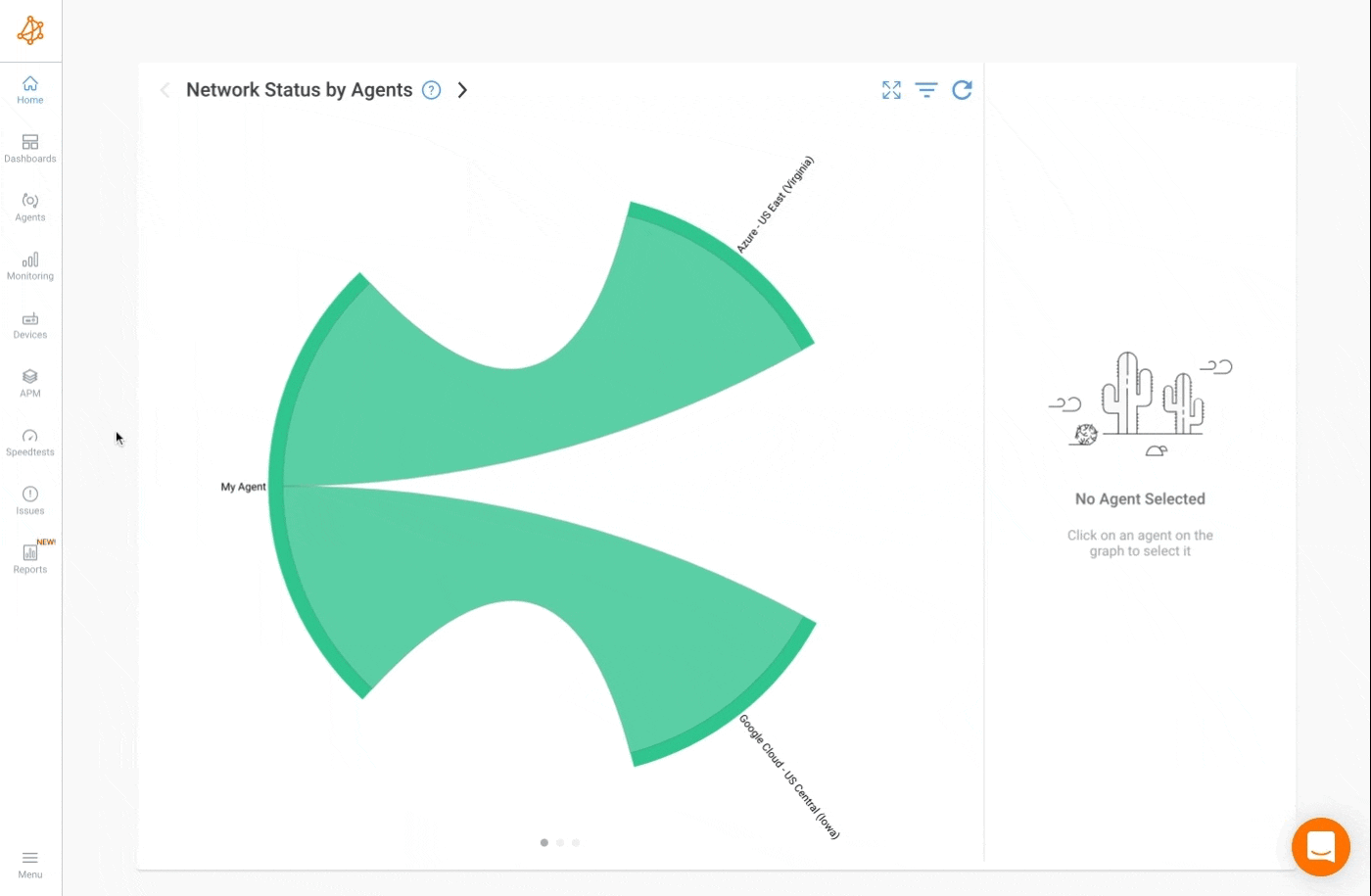
APM tools can be used to monitor applications in real-time, allowing administrators to detect issues as they occur and take immediate action to resolve them. APM can also be used for historical analysis, allowing administrators to identify trends and patterns in application performance over time.
Overall, application performance monitoring is critical for ensuring that applications are meeting user requirements and delivering a positive user experience. By monitoring and optimizing application performance, businesses can increase efficiency, reduce downtime, and ultimately, drive revenue growth.
Obkio's APM feature is designed to help IT teams troubleshoot web performance issues and confirm if a problem is stemming from the network or not. With two types of APM tests available, Obkio makes it easy to monitor the performance of any website or web service from an application standpoint.
The APM HTTP feature allows you to test a single HTTP URL periodically, extracting detailed and real-time performance metrics. This feature is designed to be used without any assistance from the Obkio team and provides a straightforward way to monitor web performance. The APM Web feature, on the other hand, is only available on demand for Enterprise customers and is developed as a custom script to test specific web workflows from a full web browser.
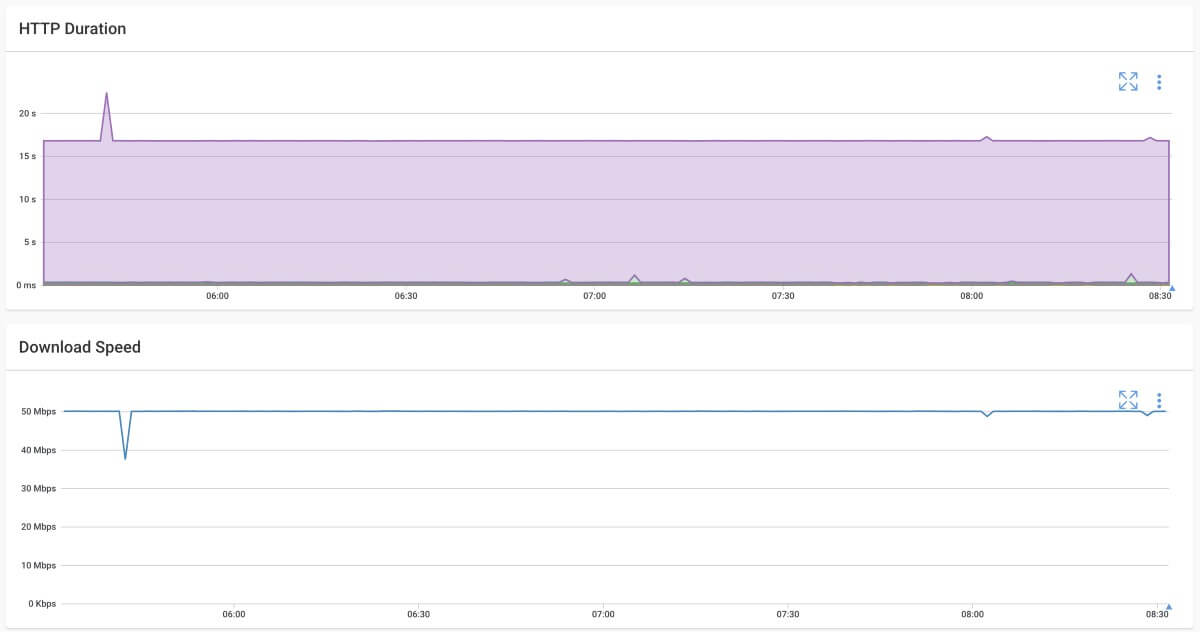
Once the APM tests are configured, you can view the metrics via the APM tab, which lists all ongoing tests. Select a specific APM test to view related metrics on the APM graphs, which show metrics such as response time, latency, throughput, and error rates.
Using Obkio's APM feature, you can quickly identify performance issues and determine if they are coming from your Salesforce instance or the network.
By monitoring and optimizing Salesforce performance, you can ensure that your system is delivering optimal performance and user experience. This way, you can
Salesforce slow loading, also known as slow page load times, refers to the situation where Salesforce webpages or specific components within Salesforce take longer than expected to load or respond. Slow loading can be frustrating for users and can hinder productivity. Several factors can contribute to slow loading in Salesforce, and addressing them is essential for maintaining a smooth user experience.
Here are some common causes and potential solutions for Salesforce slow loading:
Network Issues: Slow internet connections or network congestion can lead to delays in loading Salesforce pages. Ensure that users have a stable and high-speed internet connection. Address network congestion issues if they persist.
Heavy Customizations: Extensive customizations, such as custom fields, page layouts, and components, can increase page load times.Review and simplify page layouts, reduce the number of custom fields on a page, and minimize custom code to optimize performance.
Large Data Volumes: An excessive amount of data, records, or attachments in your Salesforce instance can slow down database queries and page loading times. Archive or delete unnecessary data, implement data archiving solutions, or consider data partitioning strategies.
Complex Reports and Dashboards: Complex reports or dashboards with numerous data sources and calculations can lead to slow loading times. Simplify reports and dashboards, limit the number of components, and use summary fields or report optimizations.
Apex Code and Triggers: Inefficient or poorly optimized Apex code and triggers can result in slow database operations and page loads. Review and optimize Apex code, avoid unnecessary queries and loops, and minimize trigger execution times.
Governor Limits: Exceeding Salesforce's governor limits, such as the number of SOQL queries or CPU time, can lead to slow loading and processing limits. Ensure your code adheres to Salesforce's governor limits, and use asynchronous processing when applicable.
Third-Party Integrations: Slow responses from external systems integrated with Salesforce can impact page load times Monitor and optimize external integrations, implement caching, and consider retry mechanisms.
Browser Performance: Older or incompatible web browsers may not render Salesforce pages efficiently. Ensure that users are using supported and up-to-date web browsers for the best performance.
Server and Infrastructure Issues: Overloaded or underpowered Salesforce servers and infrastructure can result in slow loading times. Review and upgrade server resources if necessary, and consider leveraging Salesforce's data centers or optimizing server configurations.
User Training and Adoption: Users may inadvertently create performance bottlenecks through incorrect usage or inefficient processes. Provide training and best practices to users to optimize their workflows and reduce unnecessary actions that may slow down the system.
Monitoring and addressing slow loading issues in Salesforce is an ongoing process. Regularly review performance metrics, user feedback, and system optimizations to ensure a smooth and efficient user experience.

Salesforce slow performance refers to situations where the overall responsiveness and speed of the Salesforce platform are slower than expected or acceptable.
Slow performance can manifest in various ways, including delayed page loading, slow data retrieval, and sluggish responsiveness when users interact with the system. Slow performance can be detrimental to user productivity and satisfaction.
Several factors can contribute to slow performance in Salesforce, and it's essential to identify and address these issues to ensure that Salesforce operates optimally. Here are some common causes and potential solutions for Salesforce slow performance:
Large Data Volumes: Excessive amounts of data, such as records, attachments, or history data, can slow down database operations and page loading times. Implement data archiving, data pruning, or data partitioning strategies to manage and reduce data volumes.
Complex Customizations: Extensive customizations, including custom fields, page layouts, and validation rules, can increase the complexity of data retrieval and processing, leading to slow performance. Review and simplify customizations, optimize validation rules, and consider consolidating fields or objects when possible.
Heavy User Load: A high number of concurrent users or automated processes can strain Salesforce resources and cause slow performance. Consider network load balancing, asynchronous processing, or adjusting user permissions to distribute the load more evenly.
Large Reports and Dashboards: Complex reports and dashboards with numerous data sources and calculations can slow down data retrieval and rendering. Simplify reports and dashboards, limit the number of components, and use caching where appropriate.
Apex Code and Triggers: Inefficient or poorly optimized Apex code and triggers can consume excessive CPU time, leading to slow performance. Review and optimize Apex code, avoid unnecessary queries, and use bulk processing techniques to minimize resource consumption.
External Integrations: Slow responses from external systems integrated with Salesforce can impact overall system performance. Monitor and optimize external integrations, implement caching, and consider error handling and retry mechanisms.
Governor Limits: Exceeding Salesforce's governor limits, such as query limits or CPU time, can lead to slow performance. Ensure that code and processes adhere to Salesforce's governor limits and use asynchronous processing when necessary.
Browser Compatibility: Using unsupported or outdated web browsers may result in slower page rendering and interactions with Salesforce. Ensure that users are using compatible and up-to-date web browsers to improve performance.
Server and Infrastructure: Insufficient server resources or poorly configured infrastructure can contribute to slow performance. Review and optimize server resources, consider Salesforce's data centers, and assess infrastructure performance.
Monitoring and Maintenance: Inadequate monitoring and proactive maintenance practices can lead to performance degradation over time. Implement continuous monitoring, performance testing, and regular maintenance to identify and address issues before they impact users.
Identifying and addressing slow performance in Salesforce is critical to maintaining a productive and efficient CRM system. Regular performance monitoring, user feedback, and proactive optimization efforts are key to ensuring that Salesforce consistently delivers optimal performance.
Salesforce customization is a common practice that helps organizations tailor their CRM systems to meet their unique needs. However, with customization comes the risk of introducing issues that can impact system performance and user experience. In this section, we will discuss the steps that IT teams can take to identify and address Salesforce customization issues.
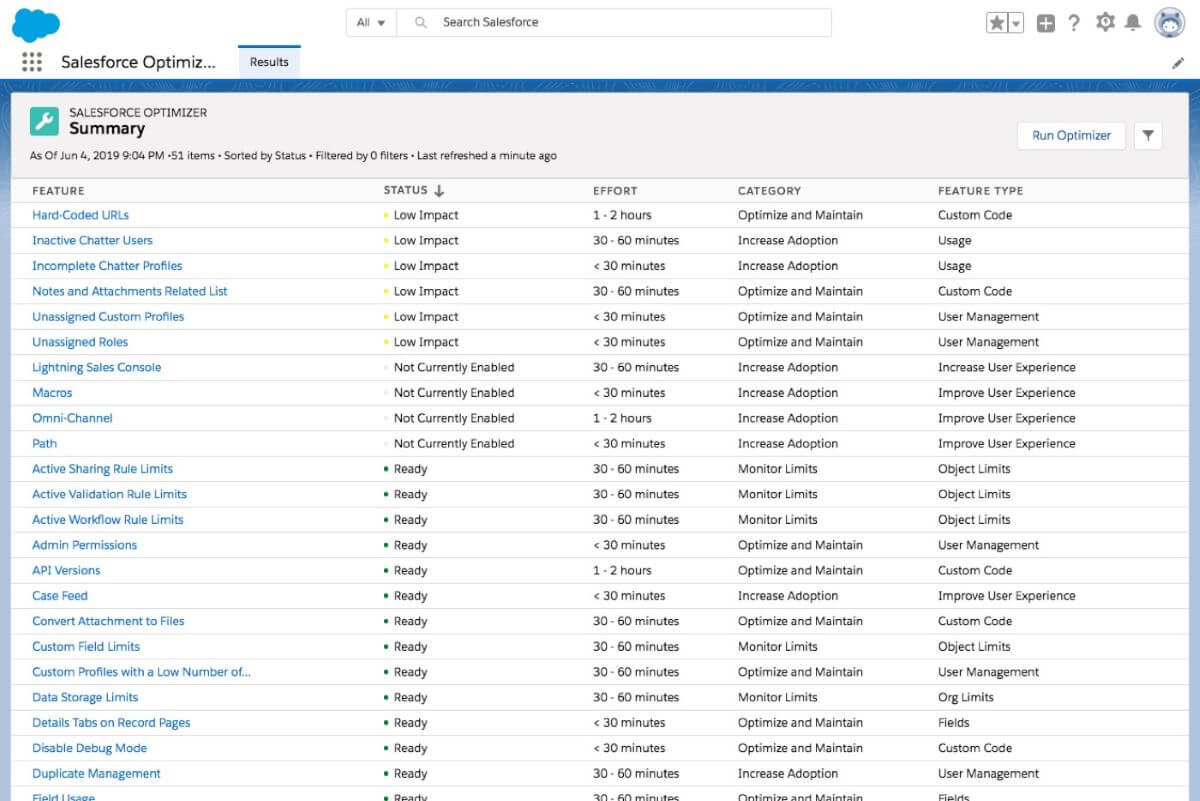
These steps include reviewing recent changes, analyzing user impact, checking for errors, using debug logs, checking for inefficiencies, consulting with developers, and testing customizations in a sandbox environment.
By following these steps, IT teams can ensure that their Salesforce instance is running smoothly and providing maximum value to users.
Here are some steps to help identify Salesforce customization issues:
Review Recent Changes: Identify any recent changes made to the Salesforce instance or customizations, such as the addition of new workflows, objects, or custom fields.
Analyze User Impact: Determine if the customization issue is impacting all users or a subset of users. If the issue is specific to certain users or user groups, this may indicate a customization issue.
Check for Errors: Check for any error messages that may be related to the customization issue. This can be done by reviewing the Salesforce system logs or error messages generated by the customizations.
Use Debug Logs: Use Salesforce's Debug Logs feature to help identify the source of the issue. Debug logs can provide detailed information about how customizations are interacting with Salesforce's core functionality.
Check for Inefficiencies: Analyze customizations for any inefficiencies that may be impacting performance, such as poorly written code or inefficient workflows.
Consult with Developers: Consult with the developers who created or maintain the customizations to understand how they were designed and how they interact with Salesforce.
Test Customizations: Test the customizations in a sandbox environment to identify any issues that may not be apparent in the production environment.
By following these steps, IT teams can identify Salesforce customization issues and take targeted actions to address them, improving system performance and user experience.
Salesforce customization allows organizations to tailor their CRM system to their specific needs. However, some common customization issues can impact the performance of Salesforce, leading to slow response times, system crashes, and frustrated users.
In this section, we will explore five of the most common customization issues that can affect Salesforce performance. We will discuss poorly written code, inefficient workflows, overuse of triggers, large data volumes, and customizations not optimized for mobile.
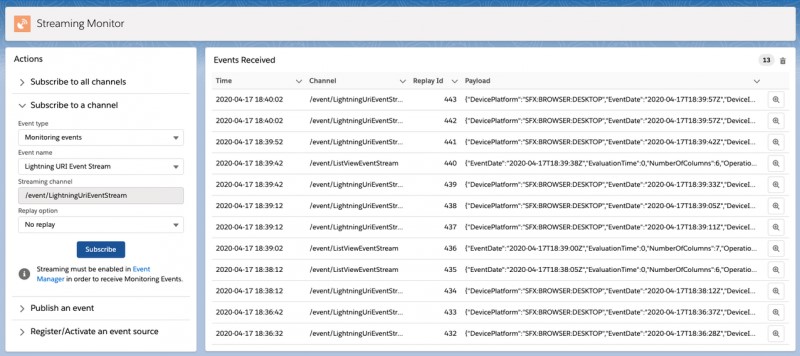
By understanding these issues, IT teams can take steps to optimize their customizations and ensure optimal performance of their Salesforce instance.
There are several common customization issues that can impact Salesforce performance. Here are a few examples:
Poorly written code: Custom code can be a powerful tool for tailoring Salesforce to an organization's needs. However, if the code is not optimized or written efficiently, it can slow down system performance.
Inefficient workflows: Workflows automate business processes in Salesforce, but they can also cause performance issues if they are not designed efficiently. For example, if a workflow rule triggers a large number of tasks or email alerts, it can put a strain on system resources.
Overuse of triggers: Triggers are used to automate processes when certain events occur in Salesforce, but if they are overused, they can cause performance issues. For example, if a trigger fires every time a record is saved, it can slow down system performance.
Large data volumes: As data volumes grow, they can impact system performance, especially if customizations are not designed to handle large data sets. For example, if a custom report is built to display a large amount of data, it can slow down the report generation process.
Customizations not optimized for mobile: With the rise of mobile devices, users expect to be able to access Salesforce on their smartphones and tablets. However, if customizations are not optimized for mobile, they can cause performance issues on these devices.
To avoid these customization issues and ensure optimal performance, it's important to regularly review and optimize customizations, monitor system performance, and test customizations thoroughly in a sandbox environment before deploying them to production.
Salesforce customization plays a critical role in tailoring the CRM system to meet the unique needs of an organization. However, poorly optimized customizations can lead to slow performance and negatively impact user experience. To ensure optimal performance, it is essential to regularly review and optimize customizations.

In this section, we will discuss the steps you can take to optimize Salesforce customizations for better performance. These steps include analyzing customizations for inefficiencies, reviewing workflows and triggers, optimizing code, managing data volumes, and testing customizations in a sandbox environment.
By following these steps, IT teams can optimize their customizations, improve system performance, and provide users with a seamless experience.
To identify the source of customization issues that affect Salesforce performance, you can follow these steps:
Monitor system performance: Keep an eye on system performance and identify any trends or patterns that indicate a customization issue. For example, if response times are consistently slow when a particular process is being performed, it may indicate an issue with a customization related to that process.
Use Salesforce's built-in performance monitoring tools: Salesforce provides several tools to monitor system performance, such as the Performance Monitoring Console and the Query Plan tool. These tools can help you identify which customizations are causing performance issues.
Analyze system logs: Salesforce system logs can provide valuable information about system performance and can help you identify which customizations are causing issues. Look for error messages or warnings related to customizations.
Review recent changes: If a performance issue has arisen recently, review any recent changes made to the Salesforce instance or customizations, such as the addition of new workflows or triggers.
Test customizations in a sandbox environment: Before deploying customizations to the production environment, test them thoroughly in a sandbox environment. This can help you identify any issues that may not be apparent in the production environment.
Consult with developers: If you are unable to identify the source of a customization issue, consult with the developers who created or maintain the customizations. They may be able to provide insight into the issue and suggest potential solutions.
By following these steps, you can identify the source of customization issues that affect Salesforce performance and take targeted actions to address them, improving system performance and user experience.
Monitoring your Salesforce org is essential to ensure optimal performance and a seamless user experience. Fortunately, there are many free tools available that can help you monitor and optimize your org. In this section, we will discuss the top free tools for monitoring your Salesforce org.
These tools include the Salesforce Weekly Health Check, Salesforce Optimizer, Salesforce Event Monitoring, Salesforce Inspector, and Salesforce Platform Cache Monitor.

By utilizing these tools, you can identify potential issues, optimize customizations, and ensure that your Salesforce org is performing at its best.
Here are some free ways to monitor your Salesforce org:
Salesforce Weekly Health Check: Salesforce provides a Weekly Health Check that can help you monitor the health of your Salesforce org. This check includes a report of potential issues, such as critical updates that need to be installed or objects that are close to reaching their storage limits.
Salesforce Optimizer: The Salesforce Optimizer is a free tool that analyzes your Salesforce org and provides recommendations for optimizing it. The tool identifies potential issues with customizations, data usage, and other areas of your org that may be impacting performance.
Salesforce Event Monitoring: Salesforce Event Monitoring provides detailed information about user activity, system performance, and other events within your Salesforce org. This data can be used to monitor system performance, identify potential issues, and optimize customizations.
Salesforce Inspector: Salesforce Inspector is a free Chrome extension that provides a variety of tools for monitoring and troubleshooting Salesforce customizations. The tool includes features such as viewing debug logs, analyzing code, and inspecting page layouts.
Salesforce Platform Cache Monitor: The Salesforce Platform Cache Monitor allows you to monitor the performance of the Platform Cache, a feature that stores frequently accessed data in memory to improve performance. The monitor provides real-time statistics and can help you optimize cache usage.
By utilizing these free tools, you can monitor your Salesforce org, identify potential issues, and take steps to optimize performance and provide a seamless user experience.
Monitoring Salesforce org is crucial to ensure optimal performance and provide a seamless user experience. By utilizing the top free tools, IT teams can identify potential issues and optimize customizations.
However, monitoring Salesforce performance doesn't end with tools and software. Network issues can also impact system performance and slow down user experience. Therefore, it is important to eliminate network issues as well.

One solution to proactively monitor and identify network issues is Obkio's Free Trial for Salesforce Application Performance Monitoring. With Obkio's monitoring solution, IT teams can identify performance issues before they impact business operations. The free trial includes premium features that are free for 14 days, allowing IT teams to improve system performance and provide a better user experience.
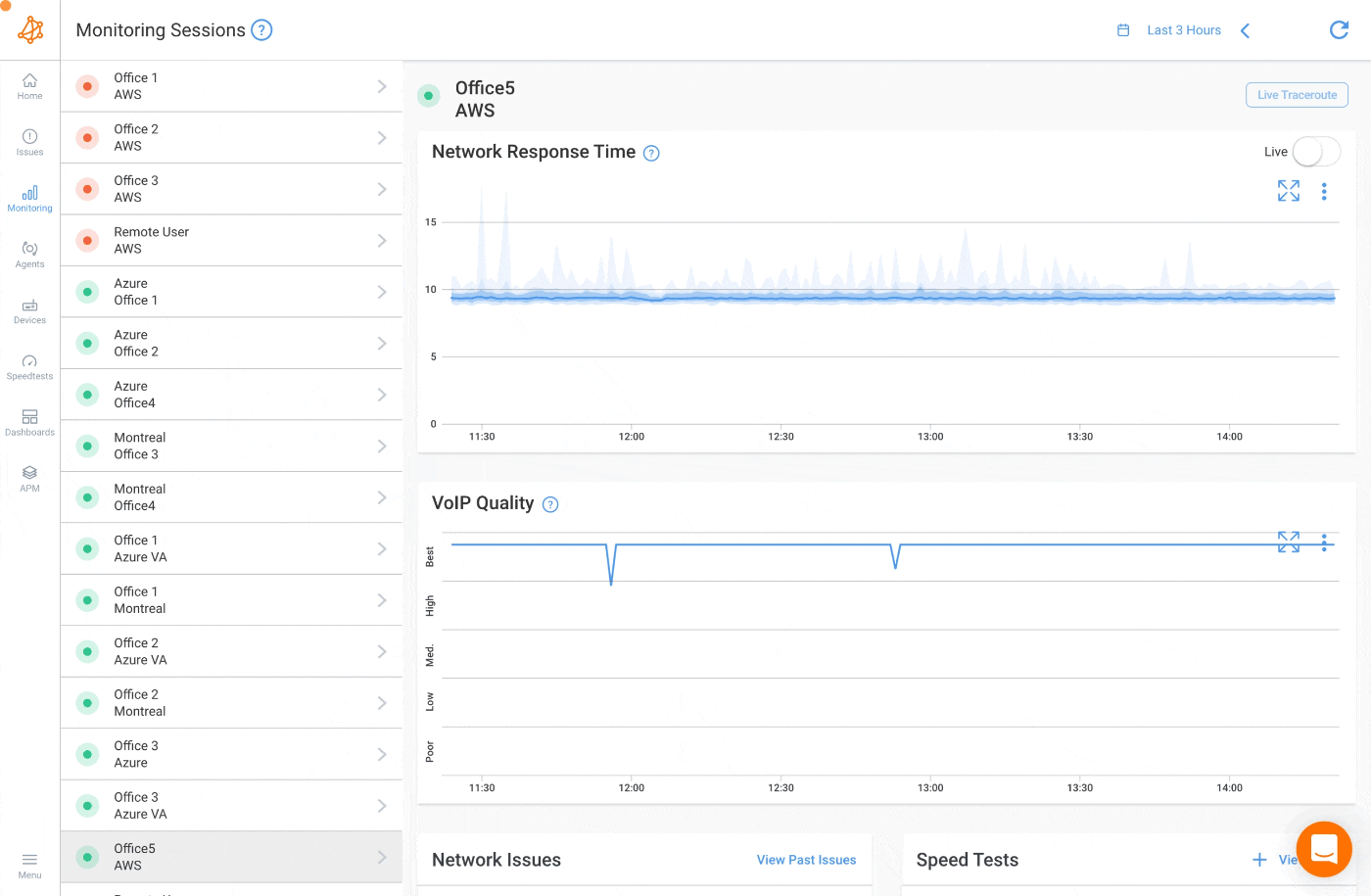
Deploying Obkio's monitoring solution is fast and easy, taking just 10 minutes to start monitoring performance in all key system components and testing real-time performance metrics. With Obkio, IT teams can quickly identify and troubleshoot live system performance problems, ensuring optimal system performance and user experience.
In conclusion, start by using the top free tools to monitor Salesforce org and optimize customizations. Additionally, eliminate network issues with Obkio's Free Trial for Salesforce Application Performance Monitoring and ensure a seamless user experience for your users.
Sources:
- https://help.salesforce.com/s/articleView?id=000387059&type=1
- https://admin.salesforce.com/blog/2022/plan-your-next-performance-test-with-performance-assistant
- https://medium.com/salesforce-architects/previewing-performance-assistant-and-scale-center-cefbf799e078
- https://trailhead.salesforce.com/users/officialblaze/trailmixes/develop-your-performance-testing-strategy
- https://www.salesforceben.com/secret-weapon-salesforce-optimizer-report/


























 Obkio Blog
Obkio Blog




